#guggenheim museum publications
Photo
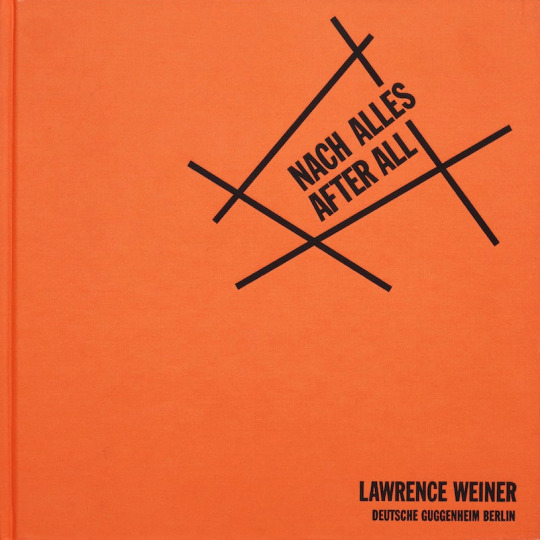

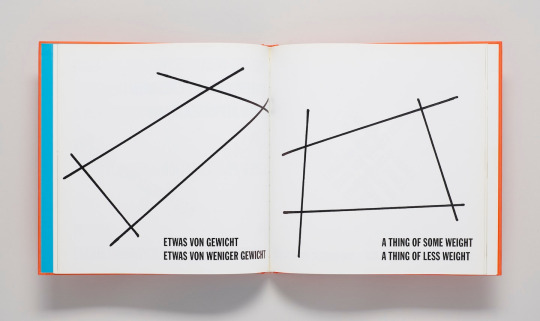
Lawrence Weiner: 'NACH ALLES/AFTER ALL', The Solomon R. Guggenheim Foundation, Guggenheim Museum Publications, New York, NY / Deutsche Guggenheim Berlin, Berlin, 2000 (pdf here) [Walker Art Center, Minneapolis, MN. © Lawrence Weiner]. Design: Lawrence Weiner. Photography: David Heald and Ellen Labenski. Published on the occasion of the exhibition: Lawrence Weiner: ‘NACH ALLES/AFTER ALL’, Organized by Lisa Dennison and Nancy Spector with Joan Young, Deutsche Guggenheim Berlin, Berlin, July 15 – 0ctober 8, 2000
#graphic design#typography#art#visual writing#geometry#exhibition#catalogue#catalog#cover#lawrence weiner#david heald#ellen labenski#solomon r. guggenheim foundation#guggenheim museum publications#deutsche guggenheim berlin#walker art center#2000s
20 notes
·
View notes
Photo










Guggenheim Museum Bilbao, Spain (No.1)
The Guggenheim Museum Bilbao is a museum of modern and contemporary art designed by Canadian-American architect Frank Gehry, and located in Bilbao, Basque Country, Spain. The museum was inaugurated on 18 October 1997 by King Juan Carlos I of Spain, with an exhibition of 250 contemporary works of art. Built alongside the Nervion River, which runs through the city of Bilbao to the Cantabrian Sea, it is one of several museums belonging to the Solomon R. Guggenheim Foundation and features permanent and visiting exhibits of works by Spanish and international artists. It is one of the largest museums in Spain.
One of the most admired works of contemporary architecture, the building has been hailed as a "signal moment in the architectural culture", because it represents "one of those rare moments when critics, academics, and the general public were all completely united about something", according to architectural critic Paul Goldberger. The museum was the building most frequently named as one of the most important works completed since 1980 in the 2010 World Architecture Survey among architecture experts.
Source: Wikipedia
#Guggenheim Museum Bilbao#Frank Gehry#Frank O. Gehry#exterior#travel#façade#La Salve Bridge#red arc by Daniel Buren#Tall Tree & the Eye by Anish Kapoor#reflecting pool#stainless steel#Bilbao#Basque Country#province of Biscay#architecture#cityscape#public art#vacation#summer 2021#original photography#Northern Spain#España#Southern Europe#Spain#detail
3 notes
·
View notes
Text
SET ONE - ROUND TWO - MATCH FOUR


"Can’t Help Myself" (2016 - Sun Yuan & Peng Yu) / "Rape" (1934 - René Magritte)
CAN'T HELP MYSELF: It’s better to watch a video of it in action. It’s a large robot arm that’s only programmed to repeatedly sweep a pool of red liquid around it. But its task is never done, the liquid eventually oozes back out onto the floor. It just makes me so sad, the futility of its work. Brilliantly, the artists even programmed it to do little gestures during its work. Sometimes the arm will shake or almost wave at the audience. So it feels less mechanical, like it has a personality. People have interpreted it to symbolize many ideas. Like the futility of violence, and those who are tasked with the endless recovery and clean up. It could be about worker exploitation, the dehumanization of victims of violence, policing borders. Regardless of what it means, I feel pity whenever I see it. (nicolaleecallahan)
RAPE: It is a beautifully provocative painting about the desecration of the female body, both physically and symbolically. He painted this piece as a tribute to his mother, whose body was found in a river after she committed suicide, entirely nude except for a nightgown wrapped around her face, obscuring her identity and leaving her corpse, to the eyes of the public, as an inhuman sexual thing with no humanity. GAH IT HURTS!! THE WAY THAT HER FACE IS REPLACED WITH A NUDE FIGURE BECAUSE THAT’S ALL THAT SHE WAS POSTHUMOUSLY. GAAAAH. (townesorsomething)
("Can't Help Myself" is a Kuka industrial robot made of stainless steel and rubber mopping up cellulose ether in coloured water made by two Chinese artists, Sun Yuan & Peng Yu. This installation was displayed in Solomon R. Guggenheim Museum, New York but was removed from display.
"Rape" is an oil on canvas painting done by the Belgian artist René Magritte. It measures 73.3 x 54.6 cm (29 x 21 in) and is located with the Menil Collection in Texas.)
169 notes
·
View notes
Text
So I saw a TikTok talking about art museums and how they’re living spaces, and people in the comments were talking about accessibility ($$$).
Well, as a librarian, I really want to let y’all know you can probably get a free pass to local art and history museums! And no, you don’t need to live in some big city. Many small towns and cities pay for passes to museums as well. Looking at a couple here in NJ.
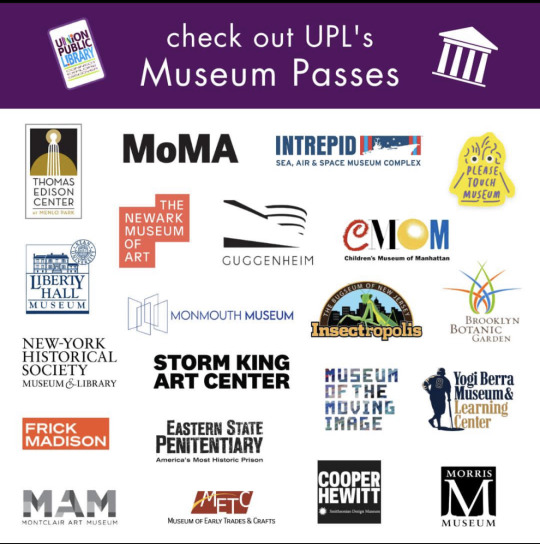
This is the offering from the Union Public Library in Union, NJ. Everything from big museums like the MoMA, Guggenheim, and Intrepid in NYC to smaller museums like the Morris Museum in Morristown, NJ (Which I interned at for a summer. It’s nice! Go visit!)

Here’s from another New Jersey library library, this time from Teaneck. They have passes you can literally print out from home, as well as a bunch of museums both in NYC and locally in NJ.
Point is, if you want to visit more museums, go get yourself a library card!
22 notes
·
View notes
Text
I'd be great at violence and other crimes, I'd like to think. If that was a job, I mean.
Unfortunately the legal jobs that get characterized often as being "violence and crimes as a job" contain very little violence and crimes by weight and also have a degree of forced conformity that I don't think I'd do well with. So I guess we'll never know if I'd be good at them.
The point is I think museums should legally be able to assemble heist teams to heist other museums's shit. This could solve essentially no problems, create many new ones, and destroy a bunch of priceless artifacts, but also it would be very funny and those priceless artifacts were stupid anyway.
In fact I think museums should all be allowed to steal anything from anywhere if they can get away with it, and it should be very easy to legally become a museum, with the main conditions being you can't sell your collection and have to display some percentage (maybe 5 or 10%?) of it where it can be seen by the public (for at most a small fee, maybe like $20 tops). Heist wars. "Come to the Guggenheim, we stole davinci's older, better woman-with-an-emotion painting and threw the Mona Lisa in the trash like the trash it is." "Welcome to the National Museum of Brazil, featuring three insects and a bust from the British museum, one of the Benin Bronzes, the liberty bell, Two Thirds of Bill Paldorski from the US's vinyl collection, and a terracotta soldier replica we made because the one we had got heisted by the Museum of Gabon. Also some stuff from Brazil, but you're not here for that." "Welcome to the Monument Museum. We were founded three years ago specifically to display the Statue of Liberty, and six days ago, as you may have heard, we successfully heisted it. It will be available for public viewing after we've reassembled it. In the meantime check out our Battle of May Island memorial stone and Minaret of Sinan Pasha Mosque, both of which we heisted for practice"
This would clearly be a superior world to live in.
18 notes
·
View notes
Text

Bilbao is a city of about 350,000 people in the Basque Country of northern Spain. Its urban center, seen here along the River Nervión, features a grid of rectangular buildings and wide avenues, which is based on a similar design used in Barcelona. Within this Overview is the Doña Casilda Iturrizar public park, Guggenheim Bilbao museum and the Abando Indalecio Prieto railway station, Bilbao’s central station.
43.263147°, -2.935258°
Source imagery: Maxar
244 notes
·
View notes
Text
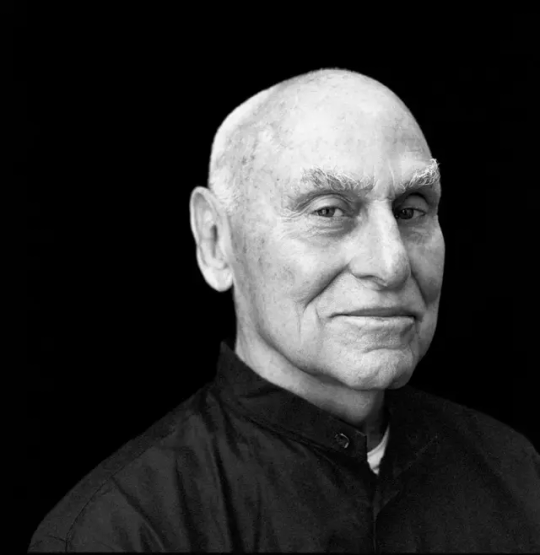
Richard Serra, who has died aged 85, was a remarkable cultural figure – a sculptor who belonged to the generation of American minimalists, was associated with process art and made experimental films, yet evoked something of an earlier, more heroic age. The critic Robert Hughes described him as “the last abstract expressionist”.
Although this statement stretches the point, Serra’s interest in the processes of sculpture led him to some extravagant gestural acts that belie the severity of his grand public commissions. Weight and Measure, made in the early 1990s for what is now Tate Britain, exemplified his austere side, with its massive steel forms designed to counter the building’s overbearing classicism. However, some of his other works, such as the twisting, “torqued” structures installed at the Guggenheim in Bilbao in 2005, are positively baroque.
Curled around an existing sculpture, Snake, that was commissioned for the museum’s opening in 1997, these steel works, dominated by ellipses and spirals, articulate spaces in which the gallery visitor can wander. They are monumental enough to take on Frank Gehry’s grandiose architecture, but, with their patinated surfaces and curved forms, also have an intimate, sensual quality. Above all, Serra’s sculptures create a remarkable interaction with the public and a strong experience of gradual discovery – hence the installation’s title, The Matter of Time.
His works have proved popular with curators, but are not confined to museums. They have appeared in settings as diverse as the Tuileries garden in Paris, the Federal Plaza in New York, and the Qatari desert, attracting responses from intense admiration to a public inquiry. One of his sculptures, Fulcrum, was put up in 1987 at Broadgate outside Liverpool Street station in London. It manages to combine monumentality with fragility, made of weathered steel plates that appear to support each other precariously.
He was born in San Francisco into a family that provided a foundation for his later career as a sculptor in metal. His father, Tony, who was from Majorca, was a pipe-fitter in a naval shipyard. His mother, Gladys (nee Fineberg), who was the daughter of Jewish immigrants from Odessa, used to introduce her son as “Richard, the artist” and was, later, touchingly enthusiastic when he began to make his way in New York. Serra himself laboured in steel mills during his time as a student and subsequently, in 1979, made a compelling film, Steelmill/Stahlwerk, about German workers in the industry.
Serra began his studies in 1957 at the University of California in Berkeley, graduating from the institution’s Santa Barbara campus with a degree in English literature. He followed this in 1961 with a three-year course in painting at Yale University, New Haven – a period in which he also worked as a teaching assistant and as a proof-reader for Joseph Albers’s book Interaction of Color (1963). At Yale he encountered such luminaries as Philip Guston, Robert Rauschenberg, Ad Reinhardt and Frank Stella, before winning a fellowship that took him to Europe in 1964.
In Paris, Serra was profoundly impressed by the sculpture of Constantin Brâncuși, but in Florence the following year he continued to paint, producing coloured grids in timed conditions controlled by a stopwatch. It was only with his first exhibition, at the Galleria La Salita in Rome in 1966, that he made a definitive move away from painting, filling cages with live and stuffed animals.
After moving to New York in the same year, Serra initially survived by setting himself up as a furniture remover, together with his friends, the composers Philip Glass and Steve Reich. Serra’s artistic development at this time was rapid, moving from experiments with rubber, fibreglass and neon tubing to the metal sculpture for which he became renowned. He soon began his long-term association with the Leo Castelli Gallery in New York, in whose Warehouse annex he was photographed in 1969 throwing molten lead at the wall with a ladle.
In the same year Serra refined this procedure by splashing the metal against a small steel plate stuck into the corner of Jasper Johns’s studio. The “castings” produced when the lead cooled down were rough, expressive forms, but this project also inspired Serra to create more impersonal pieces, in which metal sheets were wedged into the angles of rooms, leaned against each other or pinned to the wall by lead pipes. His emphasis on objective phenomena – mass, gravity and other physical forces – can also be seen in his remarkable experimental films.
In Hand Catching Lead (1968), the hand is in fact the artist’s but it is shown disembodied, trying to grasp rather than cast pieces of falling lead, which it drops or misses altogether. The repetition of this fundamentally pointless act gives the film a serial quality, akin to the celluloid process itself.
Serra’s engagement with the cutting edge also led him to work with the land artists Robert Smithson and Nancy Holt. In 1970 he assisted them with Spiral Jetty at the Great Salt Lake in Utah and, after Smithson’s death in 1973, Serra helped to complete Amarillo Ramp in an artificial lake in Texas. His own site-specific sculptures included Spin Out: For Bob Smithson (1972-73), in the park-like surroundings of the Kröller-Müller Museum at Otterlo in the Netherlands. Here the three converging steel plates interacted with each other and their environment, exemplifying Serra’s aim that “the entire space becomes a manifestation of sculpture”.
The 1970s was a difficult decade in Serra’s life. In 1971 a worker was killed in an accident during the installation of one of Serra’s sculptures outside the Walker Art Center in Minneapolis. His five-year marriage to the artist Nancy Graves ended in 1970, and his mother’s suicide in 1977 was followed two years later by the death of his father. However, in that decade he also met his future wife, the art historian Clara Weyergraf, with whom he collaborated on Steelmill/Stahlwerk. Clara was also to play a vital role in shaping his sculpture, as well as giving her name to Clara-Clara, a powerful, curvilinear work that was installed in the Tuileries garden in 1983. The history of this piece exemplifies Serra’s problems in making site-specific art, since it was originally intended to feature in a show at the Pompidou Centre, but at a late stage was deemed to be too heavy.
Clara-Clara’s travails were minor in comparison to the controversies surrounding Tilted Arc, a sculpture 36 metres long, set up at the Federal Plaza in Manhattan in 1981. Condemned for being intrusive, a magnet for graffiti artists and even a security risk, it was eventually removed in 1989, four years after a public hearing in which a majority of witnesses had advocated its preservation.
Despite this setback, Serra’s career continued to flourish. He had two retrospectives, in 1986 and 2007, at the Museum of Modern Art in New York, which also devoted a permanent room to his monumental work Equal (2015), as well as major exhibitions at home and abroad. He showed frequently with his gallery, Gagosian, in London, New York and Paris, most recently in 2021.
In 2001 he received a Golden Lion for lifetime achievement at the Venice Biennale, in 2015 the Légion d’honneur in France and, three years later, the J Paul Getty Medal.
During his latter years, Serra became heavily involved with public projects in Qatar, above all the four steel plates, rising to over 14 metres and spanning more than a kilometre, erected west of Doha in 2014. Known as East-West/West-East, the work engages spectacularly with its surroundings, the gypsum plateaux of the Brouq nature reserve in the Dukhan desert. Serra himself described it as “the most fulfilling thing I’ve ever done”.
He is survived by Clara.
🔔 Richard Serra, artist, born 2 November 1938; died 26 March 2024
Daily inspiration. Discover more photos at Just for Books…?
13 notes
·
View notes
Note
Kelly!! I’m going to NY for an extended work trip and my mind is SPINNING thinking about walking around the same places birdie and ez are, the nyc magic, feeling the love in the springtime air 🥹 I can’t remember but do you have a post sharing all the locations you mentioned or thought of while writing? Would love to walk in their footsteps 💕
omgomgomgomg — you are living my DREAM 😍 I’ve often daydreamed about going back and taking a sort of “In The Dark” tour
Here is the official In The Dark Guide:
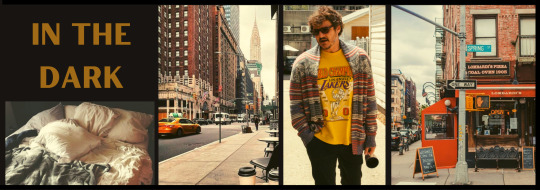
Chapter One:
NYU (Cee and Birdie's college)
The Guggenheim (Birdie's dream museum)
The Bean (the coffeeshop where Birdie and Cee eat lunch together for the first time)
Chelsea (the neighborhood Ezra's brownstone is in)
Chapter Four:
Chelsea Farmer’s Market
Strand Books (bookstore where Ezra corners Birdie)
Chapter Five:
Brighton Beach (neighborhood where Ezra scouts antiques)
Tribeca, Greenwich Village, West Harlem, Midtown (all neighborhoods)
Chapter Six:
Sofreh (Persian restaurant where Ezra celebrates his birthday, and drinks their signature cocktail: a Sekanjabin Martini)
Breads Bakery (French lunch stand in Bryant Park)
Chapter Seven:
The Library (punk bar in East Village)
Chapter Eight:
Central Park, the section along 59th and 6th, The Museum of Modern Art and La Bonne Soup (Ezra and Birdie's date weekend)
Chapter Nine:
The New York Public Library, East Wing (where Cee hides after finding out)
Chapter Ten:
The Museum of Modern Art (specifically the painting, The Dream by Henri Rousseau, which is actually also Pedro's favorite and he used to visit it a lot when he lived in NYC). Inside the museum, there is a section of windows that face a courtyard and that was where Ezra was pacing during his phone call with Birdie.
Chapter Eleven:
Hudson River Park, between 100th-125th St (cherry blossom lined paths where Ezra and Birdie walk)
The High Line (they also take walks here, you should def check this out)
Chapter Twelve:
NoMo SoHo (hotel where Ezra and Birdie spend their last night - it's gorgeous)
I think that's everything! A lot of the inspiration for this story came from just walking around the city with @krissology - the graffiti, the sounds, the endless streams of people, the architecture, the train, etc. A lot of the photos I used in my moodboards for this story were taken directly from my camera roll. ❤
If you end up going to any of these places, let me know!! I wish I could come with you and I hope you have a ton of fun! ❤
70 notes
·
View notes
Text


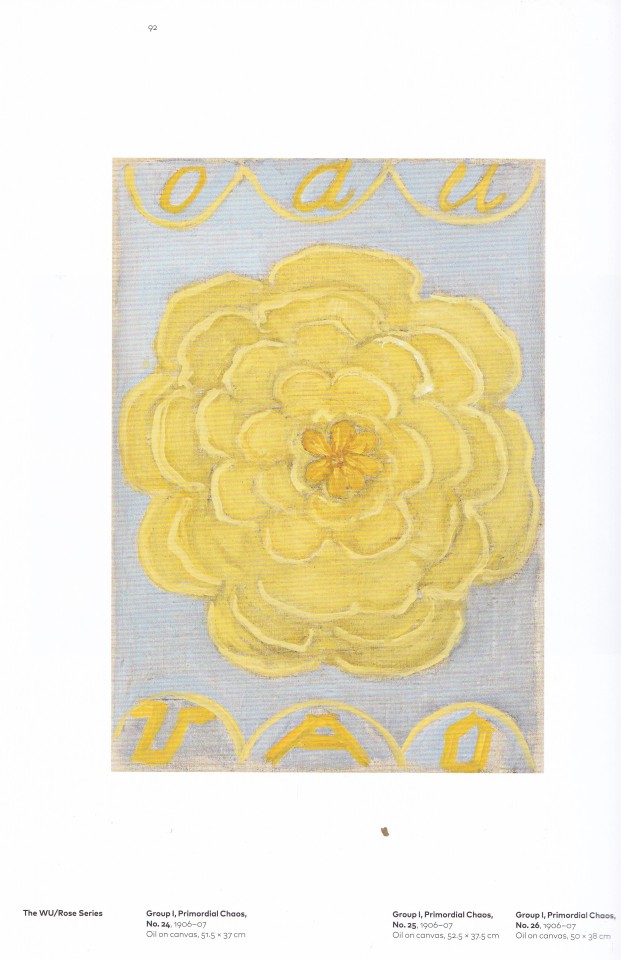


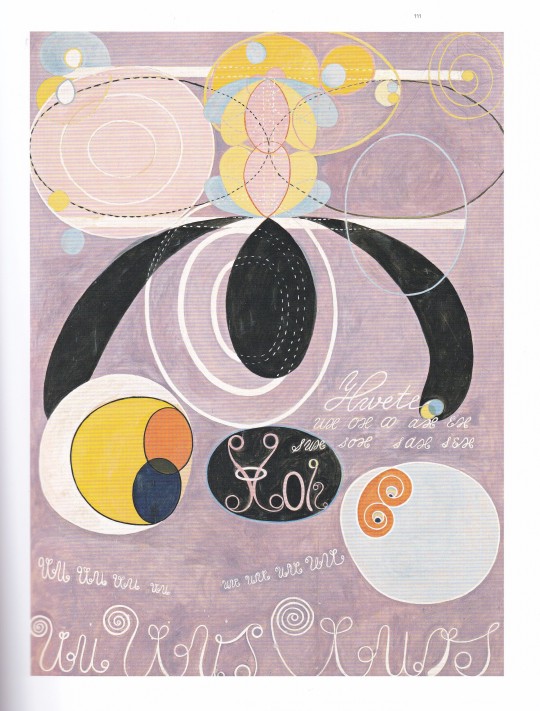

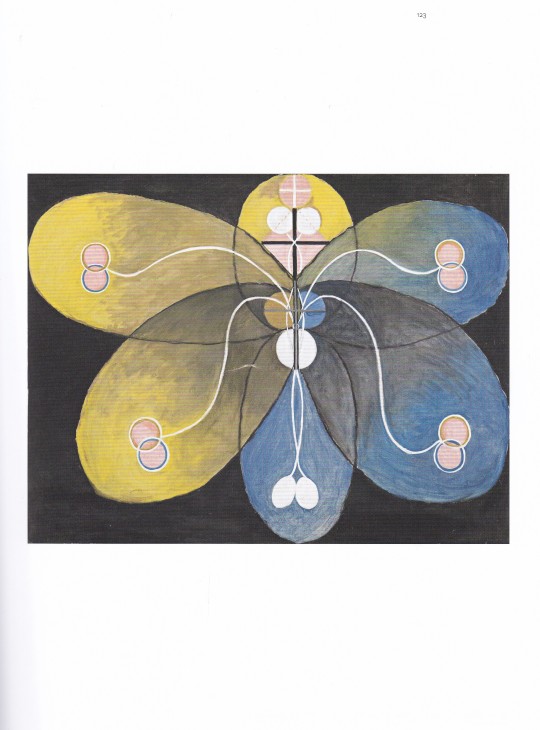


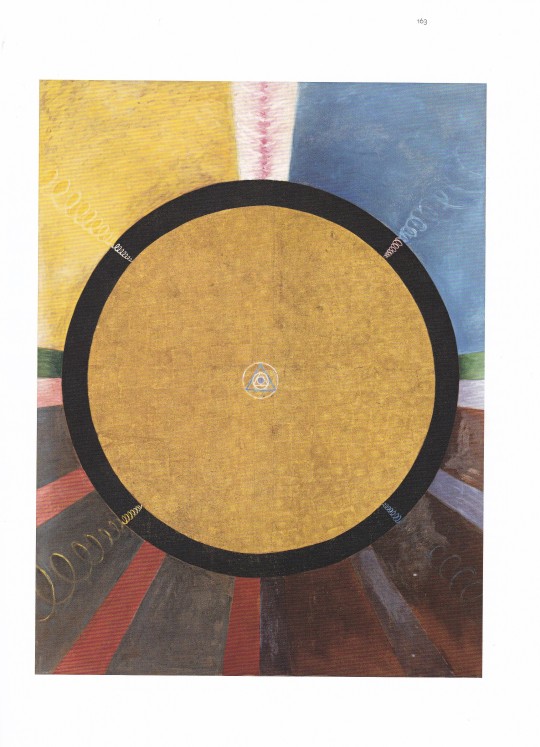
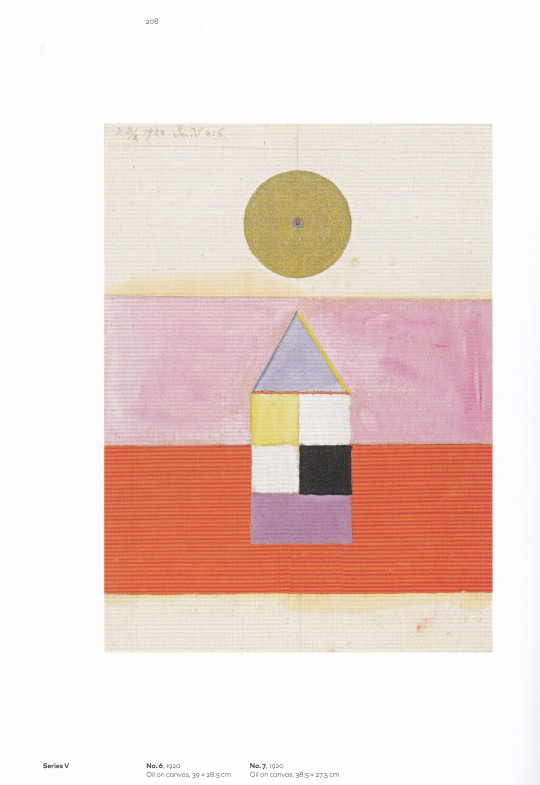

Hilma af Klint Paintings for the Future
Tracey Bashkoff
Guggenheim Museum Publ., New York 2018, 239 pages, 22.35 x 29.46 cm, ISBN 978-0892075430
euro 67,00
email if you want to buy [email protected]
Hilma af Klint's daring abstractions exert a mystical magnetism
When Swedish artist Hilma af Klint died in 1944 at the age of 81, she left behind more than 1,000 paintings and works on paper that she had kept largely private during her lifetime. Believing the world was not yet ready for her art, she stipulated that it should remain unseen for another 20 years. But only in recent decades has the public had a chance to reckon with af Klint's radically abstract painting practice―one which predates the work of Vasily Kandinsky and other artists widely considered trailblazers of modernist abstraction. Her boldly colorful works, many of them large-scale, reflect an ambitious, spiritually informed attempt to chart an invisible, totalizing world order through a synthesis of natural and geometric forms, textual elements and esoteric symbolism.
Accompanying the first major survey exhibition of the artist's work in the United States, Hilma af Klint: Paintings for the Future represents her groundbreaking painting series while expanding recent scholarship to present the fullest picture yet of her life and art. Essays explore the social, intellectual and artistic context of af Klint's 1906 break with figuration and her subsequent development, placing her in the context of Swedish modernism and folk art traditions, contemporary scientific discoveries, and spiritualist and occult movements. A roundtable discussion among contemporary artists, scholars and curators considers af Klint's sources and relevance to art in the 21st century. The volume also delves into her unrealized plans for a spiral-shaped temple in which to display her art―a wish that finds a fortuitous answer in the Guggenheim Museum's rotunda, the site of the exhibition.
Hilma af Klint (1862–1944) is now regarded as a pioneer of abstract art. Though her paintings were not seen publicly until 1987, her work from the early 20th century predates the first purely abstract paintings by Kandinsky, Mondrian and Malevich.
14/06/23
orders to: [email protected]
ordini a: [email protected]
twitter:@fashionbooksmi
instagram: fashionbooksmilano
designbooksmilano
tumblr: fashionbooksmilano
designbooksmilano
#Hilma af Klint#swedish artist#art exhibition catalogue#Guggenheim Museum NY 2018#abstract art#Paintings for the future#fashionbooksmilano
42 notes
·
View notes
Text
Portraits of Romanovs (and Relations) by Nicholas Panagiotti Zarokilli
Nicholas Pannagiottis Zarokilli was born in Turkey in 1879. He was a painter particularly fond of creating pictures of beautiful women. From 1912 to 1920, Zarokilli produced paintings for publications like MoToR, Modern Priscilla, Women’s Home Companion, The Green Book, McCall’s, and The Saturday Evening Post.
He also designed World War I posters. The United States needed money for the war, so the artist created posters to try and encourage people to give for the cause.
Zarokilli was known well for his dry-point paintings. Drypoint is a printmaking technique of the intaglio family, in which an image is incised into a plate or "matrix" with a hard-pointed "needle" of sharp metal or diamond point. In principle, the method is practically identical to engraving.
He painted portraits for people such as the Queen of Spain, the Archbishop of Canterbury, Grand Duchess Anastasia, the King of Portugal, and Mr. and Mrs. Solomon Guggenheim. Landscapes were also his love, painting the cities of Venice, Madrid, and Seville.
The following is his rendering of several members of the Romanov family (and other relations.) I have seen some of these here and there before (several of you have them in your Tumblrs and always admired them; I think he captures the likenesses admirably. I found the ones here together and identified on the British Museum website (they were done between 1920 and 1922.)
These are the names of the easily recognizable "personages" in the paintings in the order they appear below:
Prince Felix Yusupof (wearing a suit)
Prince Felix Yusupof (head)
Princess Irina Alexandrovna
Grand Duke Alexander Mikhailovich (sitting)
Grand Duke Alexander Mikhailovich (bust)
Prince Andrei Alexandrovich
Prince Feodor Alexandrovich
Grand Duchess Anastasia Mikhailovna
Grand Duke Kyril Vladimirovich
Grand Duchess Maria Pavlovna the Younger
Queen Marie of Romania (born Princess Marie Alexandra Victoria of Edinburgh) - Granddaughter of Queen Victoria
Queen Victoria Eugenie of Spain (born Princess Victoria Eugenie Julia Ena of Battenberg (youngest granddaughter of Queen Victoria, Hessian Princess through the morganatic Battenberg line)



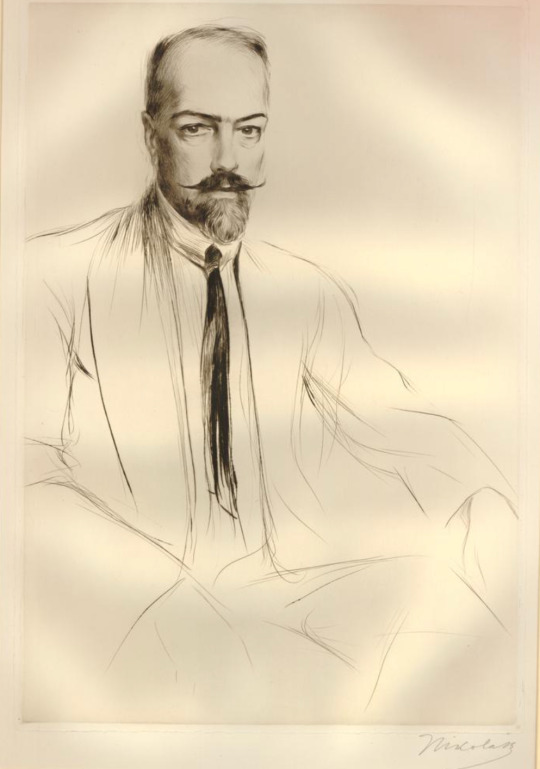
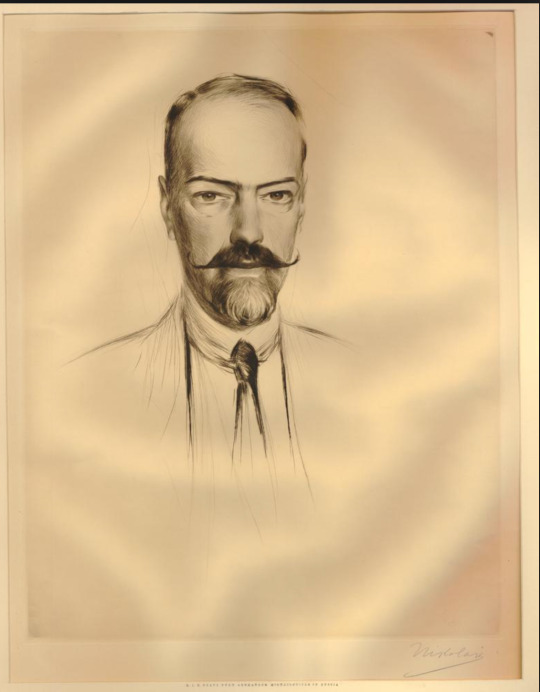

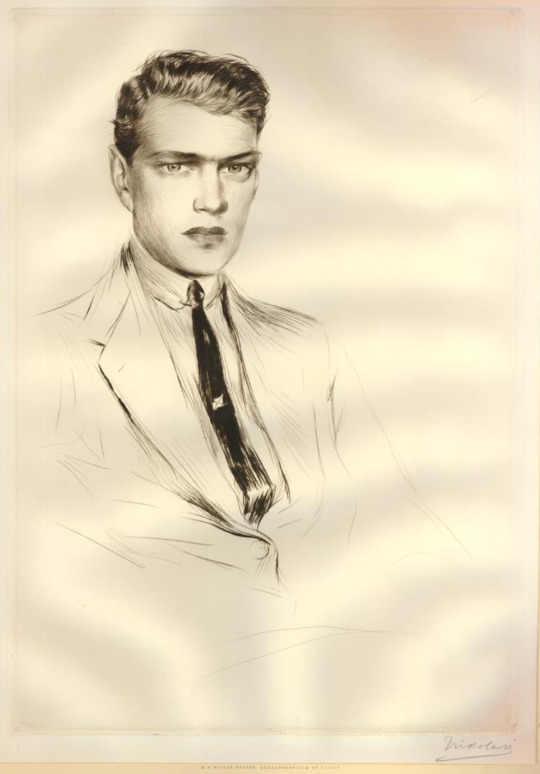


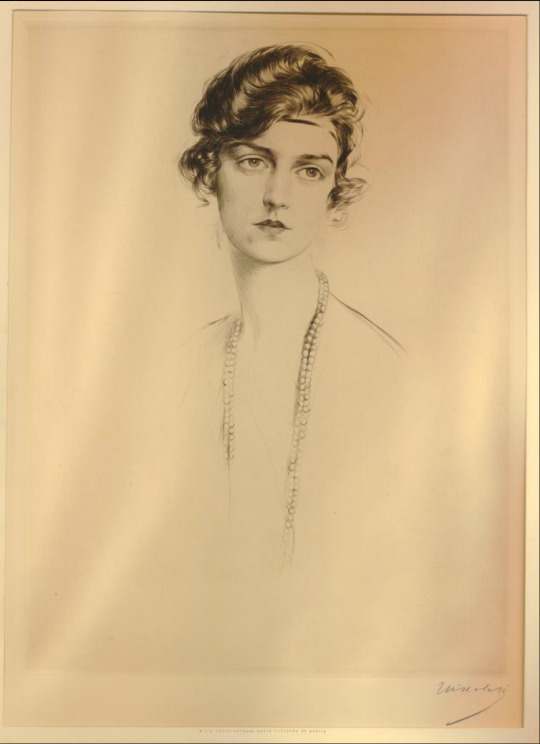

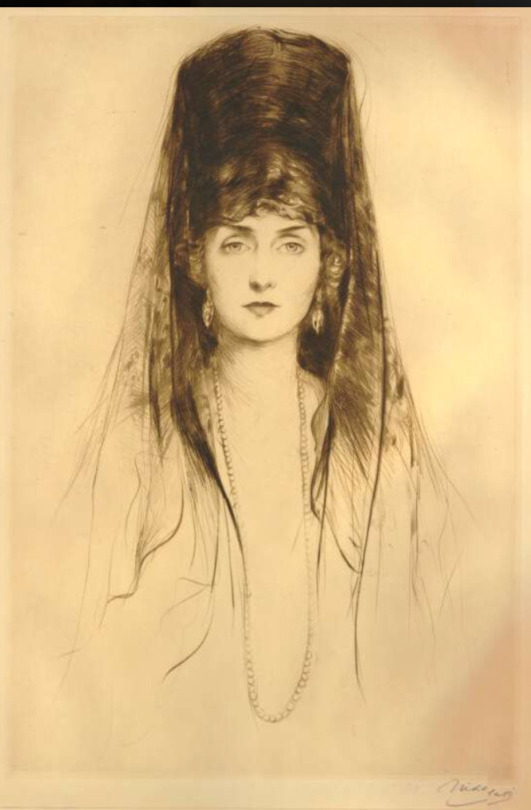
References
N.P. Zarokilli Archives | The Saturday Evening Post
Nicholas Panagiotti Zarokilli | British Museum
#Nicholas Panagiotti Zarokilli#Prince Felix Yusupov#Princess Irina Yusupov#Grand Duke Alexander Mikhailovich#Grand Duchess Anastasia Mikhailovna#Prince Andrei Alexandrovich#Prince Feodor Alexandrovich#Grand Duke Kyril Vladimirovich#Grand Duchess Maria Pavlovna the Younger#Queen Marie of Romania#Queen Victoria Eugenia of Spain#Romanov dynasty
38 notes
·
View notes
Text
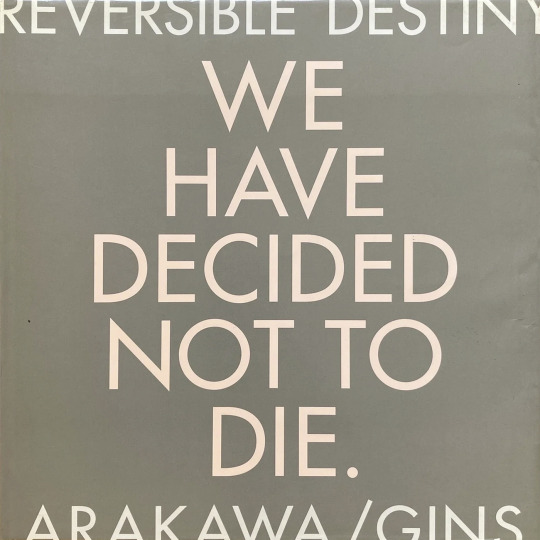
Arakawa/Gins: Reversible Destiny, Guggenheim Museum, Guggenheim Museum Publications, New York, NY, 1997 [Saint-Martin Bookshop, Bruxelles-Brussel]
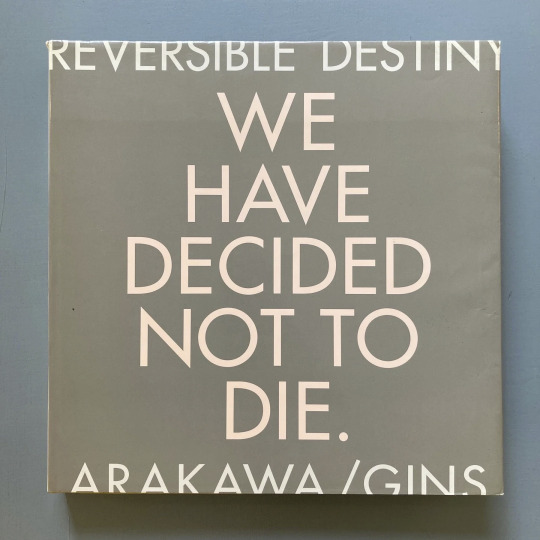
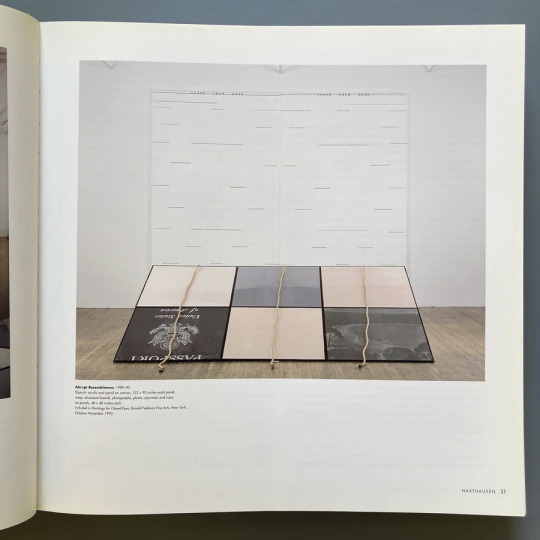
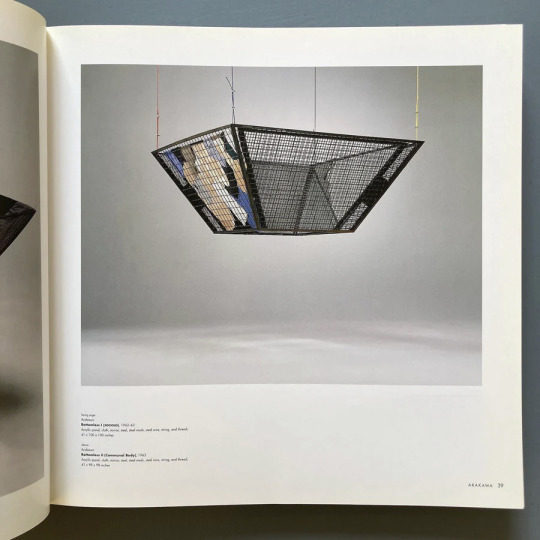
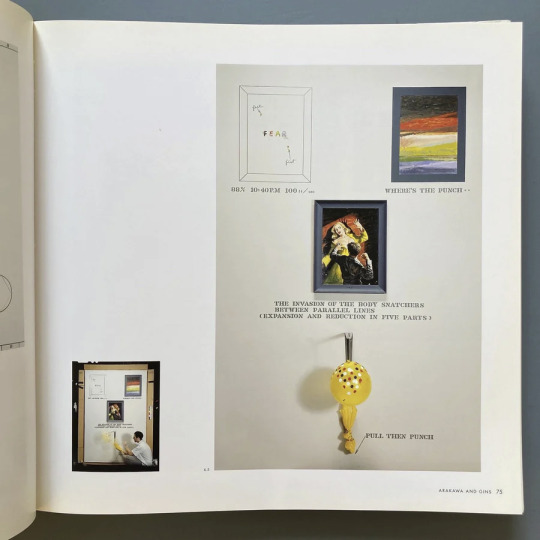


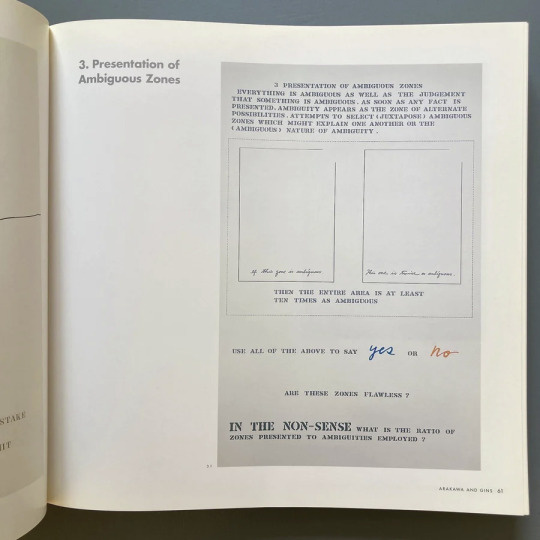
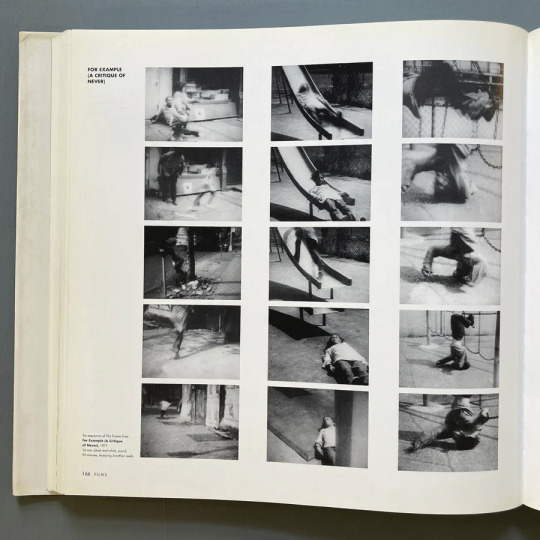
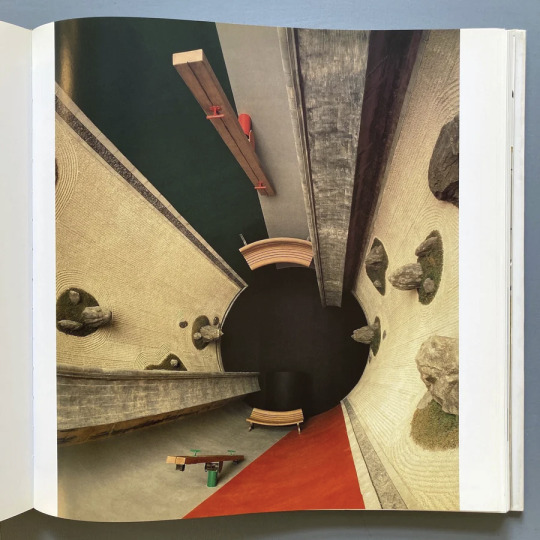

Foreword: Thomas Krens
Introductions: Michael Govan, and Jean-François Lyotard
Texts: Charles Haxthausen
Design: Michael Sumner, Burning Books
Editing, Design Assistance: Melody Sumner Carnahan
Cover: Arakawa and Gins
Exhibition: organized by Michael Govan, Guggenheim Museum SoHo, New York, NY, June 25 – August 31, 1997
#graphic design#typography#art#architecture#structure#geometry#exhibition#catalogue#catalog#cover#shusaku arakawa#madeline gins#thomas krens#michael govan#jean françois lyotard#michael sumner#melody sumner carnahan#burning books#solomon r. guggenheim museum#solomon r. guggenheim foundation#guggenheim museum publications#1990s
32 notes
·
View notes
Photo










Tall Tree & the Eye, Bilbao (No. 1)
Over the past 30 years, sculptor Anish Kapoor has undertaken investigations into objecthood that have expanded Post-Minimalist practices and had a profound effect on the course of contemporary sculpture. Exploring color, scale, materiality, space, and process, he has worked iteratively through major themes and bodies of work, or what the artist calls "form languages". Like his early "voids", his more recent architecturally inspired, site-specific installations are phenomenological events that elicit both intimate and collective experiences. For Kapoor, the object is always in a state of becoming as it transits through varying processes of self-generation, dissolution, fragmentation, and multiplication. The body and gaze of the viewer are all-important elements of the work, as each viewer brings his or her own subjective reality to bear while witnessing and contemplating these powerful sculptural presences.
Source
#Tall Tree & the Eye by Anish Kapoor#not a nice person#reflection#travel#stainless steel#Guggenheim Museum Bilbao#Frank O. Gehry#Frank Gehry#sculpture#public art#architecture#titanium plates#cityscape#España#La Salve Bridge#Bilbao#Basque Country#province of Biscay#Spain#summer 2021#tourist attraction#landmark#original photography#blue sky#clouds#I really love the first pic
2 notes
·
View notes
Text
Stats 2: Electric Boogaloo
Our 256 works are comprised of.... 132 paintings, 36 drawings / digital artworks / comics, 26 installation pieces, 20 sculptures, 11 buildings, 11 public artworks, 10 photographs, 4 prints, 3 cave arts, 2 textile arts, and 1 thing I classified as a collage instead of anything else!
More stats below!
Most popular city: New York, with 13 pieces, followed by Paris with 8, and Chicago is third with 7! Washington DC has 6, Florence, Madrid, and London all have 5, Philadelphia has 4, Dublin, Edinburgh, Mexico City each have three, and all the following cities have two: Boston, Cairo, Calgary, Cordoba, Helsinki, Houston, Jerusalem, Los Angeles, Munich, Ottawa, Prague, Vienna, Warsaw
Most popular museum: somehow the Art Institute of Chicago has the most with 6 pieces! Followed by the Museum of Modern Art with 5 pieces! The Museo del Prado has 4, the Philadelphia Museum of Art has 3, and the Ateneum, Louvre, Metropolitan Museum of Art, Museo Dolores Olmedo, National Gallery of Canada, Solomon R. Guggenheim Museum, Tate Britain, Tretyakov Gallery, and the Uffizi Gallery each have 2! In addition, the single works are spread out amongst 16 city level galleries (ie the Phoenix Art Museum), 5 state/provincial (ie Queensland Art Gallery), 25 national (ie National Gallery Prague), 8 museums named after benefactors (ie the Hirshhorn Museum), 7 museums dedicated to a specific artist (ie the Van Gogh Museum) and numerous other institutions! Churches, palaces, increasingly specific museums, museums that are named after their location rather than their governmental level... and of course a whole lot of private collections and pieces we were unable to find the location of!
Countries! 50 pieces are in the US! 13 in France! 12 in Spain! 7 in England, 6 in Canada and Italy, 5 in Russia, 4 in Ireland, Mexico, and Australia, 3 each in Germany, Austria, and Scotland, and 2 each in China, the Netherlands, Israel, Finland, Wales, Poland, Japan, Egypt, and India, and 1 each in Portugal, Ecuador, Thailand, Singapore, Belgium, Argentina, Sweden, the Czech Republic, Norway, Bangladesh, Saudi Arabia, and the Vatican!
Demographics! I revoked John Singer Sargents American status for these because he was born in Europe, and spent most of his life travelling around Europe. I tried my best to track down the correct numbers but honestly some of these are likely to be slightly off. I went with easily publicly available information like Wikipedia and where that failed the author's website. I also tracked people's birth countries in addition to where they lived / worked for most of their lives. Anyway! We have 74 pieces by American artists! 27 French, 22 English, 14 Russian, 13 Spanish, 11 Canadian, 9 Italian, 8 Chinese, 8 German, 6 Irish, 6 Polish, 6 Mexican, 5 Greek (four of those are Ancient Greece), 5 Ukrainian, 5 Japanese, 4 Australian, 4 Belgian, 4 Indian, 3 Serbian, 3 Armenian, 3 Dutch, 3 Austria, 3 Latvian, 3 Swedish, 2 each from Finland, Scotland, Malaysia, Cuba, the Czech Republic, and Norway, and one each from Israel (specifically), Portugal, Ecuador, Thailand, Switzerland, Denmark, Iran, Colombia, Chile, Estonia, and Egypt (albeit Ancient Egypt)
Including the one Israeli artist, we have 7 Jewish artists represented, as well as 4 Black, 6 Indigenous (one is half Kichwa, one is Sami, one is Haida, one is Ojibwe, and two are Australian Aboriginals. One of those is Kokatha and Nukunu, and the other one was a group project with eight artists who did the majority of the work, and 6 of those are from Erub Island but the articles did not specify further except that at least one of the eight is non-Indigenous), 1 Chicana, and 1 Asian-American (which I am specifying because I felt very stupid adding tallies to an Asian column when I already said there are 8 Chinese artists and 5 Japanese and 2 Malaysians and....). We also do have 16 artists that publicly identify as queer in some fashion! I have listed 9 works by gay men, 2 works by lesbians, and 5 that have chosen to use "queer" instead of other labels.
And on that note.... we have 155 works by men, 51 by women, and 2 by nonbinary artists!
Most represented artists! Frida Kahlo and René Magritte tied with four works each! Félix González-Torres, Francisco Goya, John Singer Sargent each have three! And the artists that have 2 artworks each are... Claude Monet, Dragan Bibin, Edmund Blair Leighton, Francisco de Zurbarán, Gustav Klimt, Holly Warburton, Hugo Simberg, Ilya Repin, Ivan Aivazovsky, Jacques-Louis David, Jenny Holzer, Louis Wain, Pablo Picasso, Sun Yuan & Peng Yu, Victo Ngai, Vincent van Gogh, Pierre-Auguste Renoir, and Leonardo da Vinci (although the second is debated attribution)! That means that 205 of the works are not by any of the above! Some have unknown artists (we've got THREE CAVE ARTS) but most are just... really varied!
And lastly, years painted (as sorted by year finished and not year started). Who else loves when something is listed as "13th century"?? Not me, that's who. This is going to be a lot of numbers, and there's no real way to make it more readable. so..... feel free to skip!
The oldest two submissions are from circa 40,000 years before present, and 30 to 32 thousand years before present! Six more artworks came to exist before 0 (CE or AD depending on who you're talking to), and 7 before 1000! 2 from the 1200s, 6 from the 1400s, 8 from the 1500s, 3 from the 1600s, and 5 from the 1700s! Several of those already listed were started in a previous ....age category (for instance, one has no specified date other than 7300 BC to 700 AD) but once we hit 1600, everything is usually finished in a relatively short timespan. 6 are from 1800-1850, 9 from 1850-1880, and the 1880s are extremely busy. 1 from 1881, 3 from 1882, 1 from 1883-1885, 5 from 1886, and two each from the next four years (1887-1890)! 6 from 1891-1895, and 5 from 1896-1900!
We've got 3 from 1901 or 1902, 4 from 1903, two each from 1906 and 1907, and one each from 1908 and 1909! 3 from 1910-1915, 3 from 1917, 2 from 1918 and one from 1919! 6 are from the Roaring Twenties, three of them specifically from 1928! 4 from 1931-1935, and only 3 from the latter half of the 30s! There's 3 from WWII, and 4 from 1946-1949, 5 from 1951-1954 but only 3 from '55-'59. 5 from the sixties, 7 spread out through the 70s, and 10 from the 80s, two each from 81, 82 and 84. The 90s have a lot of duplicate and triplicate years, totaling 20 overall! 11 are from 90-95, the other 9 are 96-99. 7 from 2001-2005, and 8 from 2006-2009. 9 from 2010-2014, 3 from 2015, 6 from 2016, 5 from 2017, 1 from 2018, 3 from 2019, 5 from 2020, 1 from 2021, 4 from 2022, 11 from 2023, and 3 ongoing projects! Whew! If anyone wants it listed By Year instead of in groups like this, that'll be most readable in like... list form and that's way too long for a stats post.
Congrats on making it to the end! If you got this far, uh, let me know if you want to see the spreadsheet after the tournament, I guess. I'm very proud of it.
50 notes
·
View notes
Text
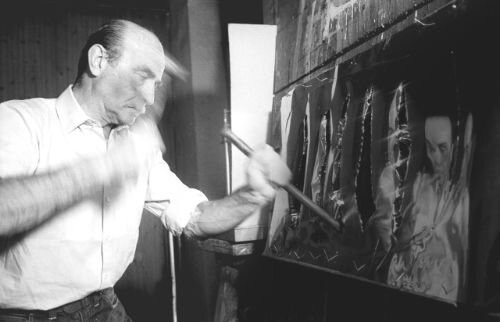
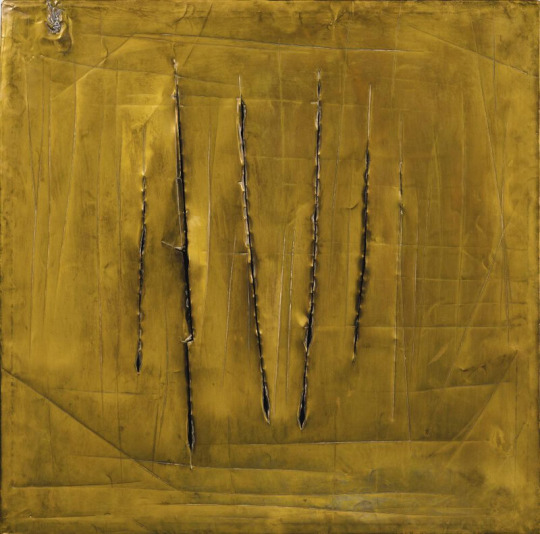
Lucio Fontana (1899 - 1968), Concetto spaziale, New York 8, signed, lacerations and scratches on brass.
Lucio Fontana in his studio. 1962
Executed in 1962, Lucio Fontana’s gleaming brass painting Concetto spaziale, New York 8 is a resplendent example of the artist’s celebrated investigations into pictorial, physical and cosmic space. The work comes from Fontana’s body of Metalli – or metal sheets – which were created between 1961 and 1968. Begun when the artist was 62 years of age, the works in this series explore the possibilities of gestural expression on incandescent sheets of metal, including copper, zinc, aluminium, and, as in the present work, brass. Scratching, gouging, and tearing violent incisions into these sheets of metal, Fontana opens out the flat pictorial plane into the depths of the third dimension, revealing an infinite vortex of space. Desirable and extremely rare, the works in this series were dedicated to the twinkling, light filled ‘City that Never Sleeps’ that inspired their creation: New York. Fontana’s vast impact on the course of contemporary art is being commemorated this year in the first major survey of the artist’s work in more than forty years at the Metropolitan Museum of Art, New York.
In 1961, Fontana was invited by Paolo Marinotti, the owner of the exhibition centre at Palazzo Grassi, Venice, to create a cycle of paintings known as the Venezie for the acclaimed Arte e Contemplazione exhibition. Exhibiting alongside the likes of Jean Dubuffet, Mark Rothko and Sam Francis, Fontana produced a number of lustrous oil paintings in a thick lavishing of metallic paint, inspired by the Baroque characteristics of the city of Venice. Manipulating the surfaces of these works, Fontana tore into the canvas to create his iconic tagli (cuts) and buchi (holes). The works dazzled the public and, later that year, they were exhibited in New York. Fontana travelled to the city for the very first time in November 1961 and was enthralled by its powerful magnetism, unlike anything he had seen before: “New York is more beautiful than Venice!!” he exclaimed, greatly affected by the immense verticality of the city, and the vast metal structures of the high-rise buildings that filled Manhattan’s skyline. “The skyscrapers of glass look like great cascades of water that fall from the sky!! At night it is a huge necklace of rubies, sapphires, and emeralds” he wrote in a letter to his friend, the architect and collector Mario Bardini (Lucio Fontana cited in: Exh. Cat., New York, Guggenheim Museum, Luca Massimo Barbero, Lucio Fontana: Venice/New York, 2006, p. 37).
Concetto spaziale, New York 8 invokes the immense and dynamic metropolis of New York City. Radiant with energy, charisma and charm, bustling with people, and filled with endless, towering skyscrapers, the city captured Fontana’s imagination. In a natural progression from the sparkling surfaces of his Venezie paintings, Fontana turned to the medium of metal in order to evoke the omnipotent and awe-inspiring wonder of his newly discovered New York. In the present work, five bold lacerations cut forcefully through the flesh of the brass, in an echo of the city’s skyline, as countless scratches and indentations score its surface. They reflect and diffract the light, creating a play of brightness and shadow that flits across the pictorial plane. “New York”, wrote the artist, “is a city made of glass colossi on which the Sun beats down causing torrents of light” (Ibid., p. 43). Indeed, the present work seems imbued with the warmth of the city’s rich and golden sunlight. Just as Venice, with its sensual allure and antique charm, had powerfully inspired Fontana’s aesthetic, so did New York captivate and enchant him with its grand industrial force. Thus does Concetto spaziale, New York 8 offer a compelling metaphor for this utopia of man-made modernity.
The Venezie and New York cycles represent some of the most sublime and opulent works of Fontana’s career. Indeed, the present work was exhibited in a number of eminent exhibitions including Fontana’s major 1977 retrospective at the Solomon R. Guggenheim Museum, New York, as well as at the Musée National d'Art Moderne, Centre Georges Pompidou, Paris (1987-88), and the Palazzo delle Esposizioni, Rome (1988). More recently, the two series became the focus of a celebrated exhibition, Lucio Fontana: Venice/New York, which travelled from the Guggenheim in Venice to New York in 2006-7. Held in important museum collections worldwide, Fontana’s Metalli works have achieved an almost mythic status within the artist’s career. With its iridescent and mesmerising beauty, Concetto spaziale, New York 8 encapsulates the radical aesthetic of this sought after series.
Courtesy Alain Truong
41 notes
·
View notes
Text
Meeting Starters
Send “Meeting + a symbol” for a starter of our muses meeting at this location, possibly for the first time! (all specific locations are only suggestions!)
Our muses meet out to eat
🥐 at a bakery (ex. Bake My Day in Queens)
☕️ at a coffee shop (ex. Higher Grounds in Manhattan, Rise & Grind in the Bronx)
🐈 at a cat cafe (ex. Kitty and Brew in Brooklyn)
🍝 at a fancy restaurant (ex. Bella Vita in Staten Island)
🥤 at a cheap diner (ex. Diner in the Bronx)
🍨 at the ice cream parlor (ex. Freshly Churned in Staten Island)
🎤 at a singing restaurant (ex. Stardust in Manhattan)
🧃 at a smoothie shop (ex. Main Squeeze in Queens)
🥗 at a vegan restaurant (ex. Wild Living in Manhattan)
Our muses meet shopping
🛍️ at the mall (ex. Bay Plaza Mall in the Bronx)
👖 at the market (ex. Brooklyn Flea Market, Queens Night Market)
👗 at the thrift store (ex. Trove Thrift in Brooklyn)
📚 at a book store (ex. Cover to Cover in Queens)
🌸 at the florist (ex. Dahlia and Daffodils in Staten Island)
🎵 at the record shop (ex. Grooves in Staten Island)
Out muses meet at the club
🕺 at a club playing throwback music (ex. Retro Night Club in the Bronx)
💃🏻 at a club playing latin music (ex. Havana Night Club in Queens)
✨ at a club playing modern music (ex. Club 51 in Manhattan)
🏳️🌈 at an LGBTQ+ friendly club (ex. Glow in Brooklyn)
🤠 at a club with a mechanical bull (ex. Cowbells in the Bronx)
👠 at a strip club (ex. Emeralds in Manhattan)
Our muses meet at a bar
🍸 ordering drinks (ex. Becky’s Martini Bar in Manhattan)
📝 on trivia night (ex. Corner Pub in Brooklyn)
🍺 sitting at the bar (ex. Joe’s Tavern in Queens)
🎱 playing a bar game (ex. Puzzles in Manhattan)
🍹on karaoke night (ex. Songbirds and Sangrias in Staten Island)
Our muses meet around the city
✈️ at the airport (ex. JFK in Queens)
🎟️ at an amusement park (ex. Coney Island in Brooklyn)
🐠 at the aquarium (ex. New York Aquarium in Brooklyn)
💳 at the library (ex. New York Public Library)
🗿 at a museum (ex. Guggenheim, Met, MoMa, New York Historical Society)
🏞️ at the park (ex. Central Park, Prospect Park in Brooklyn, Socrates Park in Queens)
🎭 at a theatrical production (ex. the Theater District in Manhattan)
🚋 at the train station (ex. Grand Central Station in Manhattan)
🚕 at Times Square
🌆 on a walking path (ex. The High Line in Manhattan, Brooklyn Heights Promenade)
🏟️ at Yankee Stadium
🦦 at the zoo (ex. Bronx Zoo)
Our muses meet doing an activity
🏋️♀️ at the gym (ex. Core Fitness in Staten Island)
🥊 at the boxing gym (ex. Champion Boxing in the Bronx)
🍿 at the movie theater (ex. Dollar Theater in the Bronx)
📽️ at an outdoor projected movie (ex. Technicolor Theater in Queens)
🎸 at a concert (ex. The Echochamber in Brooklyn)
🤣 at a comedy show (ex. Punchline in the Bronx)
⛸️ at a skating rink (ex. Roller City in Queens)
🎳 at a bowling alley (ex. Strike! in Staten Island)
🖌️ at the tattoo parlor (ex. Electric Ink in Brooklyn)
🧰 at the mechanic (ex. One Stop Auto Repair in Queens)
🖼️ at an art show (ex. Haze Gallery or The Underground in Brooklyn)
🎨 doing arts and craft (ex. Glazed Finish in Brooklyn)
⛳️ playing mini golf (ex. Holidaytown in Manhattan)
#memes#finally done!#these might end up being a staple meme since its rp specific & encourages new interactions
5 notes
·
View notes
Text
Markina-Xemein to Gernika
Another nice communal supper last night (with tomatoes from the garden). Some of the same people as before and some new ones. Everyone seems to be heading to different places today since there is no longer a public albergue in Gernika. Some are finishing before and some after Gernika. I am living like a king by staying in pension’s private with a queen bed. I have not slept well the last couple of nights because all beds were too short and had a footboard. Hopefully great rest tonight.
The walk was 27 kms today (an extra km because I went to the wrong direction). Some ups and downs and mud but not like previous days. Mostly walking on small roads and forested trails. I even walked several kms along a creek. Not too many views but lots of greenery.
It was very confusing the last couple of kms, I got sent to a busier highway via app map but it seems like there was a better route without the highway.
Gernika has an interesting and tragic history; it was completely destroyed during civil war and rebuilt again. I visited the Peace museum and walked around the town a bit.
Tomorrow is a rest day: a train to Bilbao and a visit to Guggenheim museum perhaps.










6 notes
·
View notes